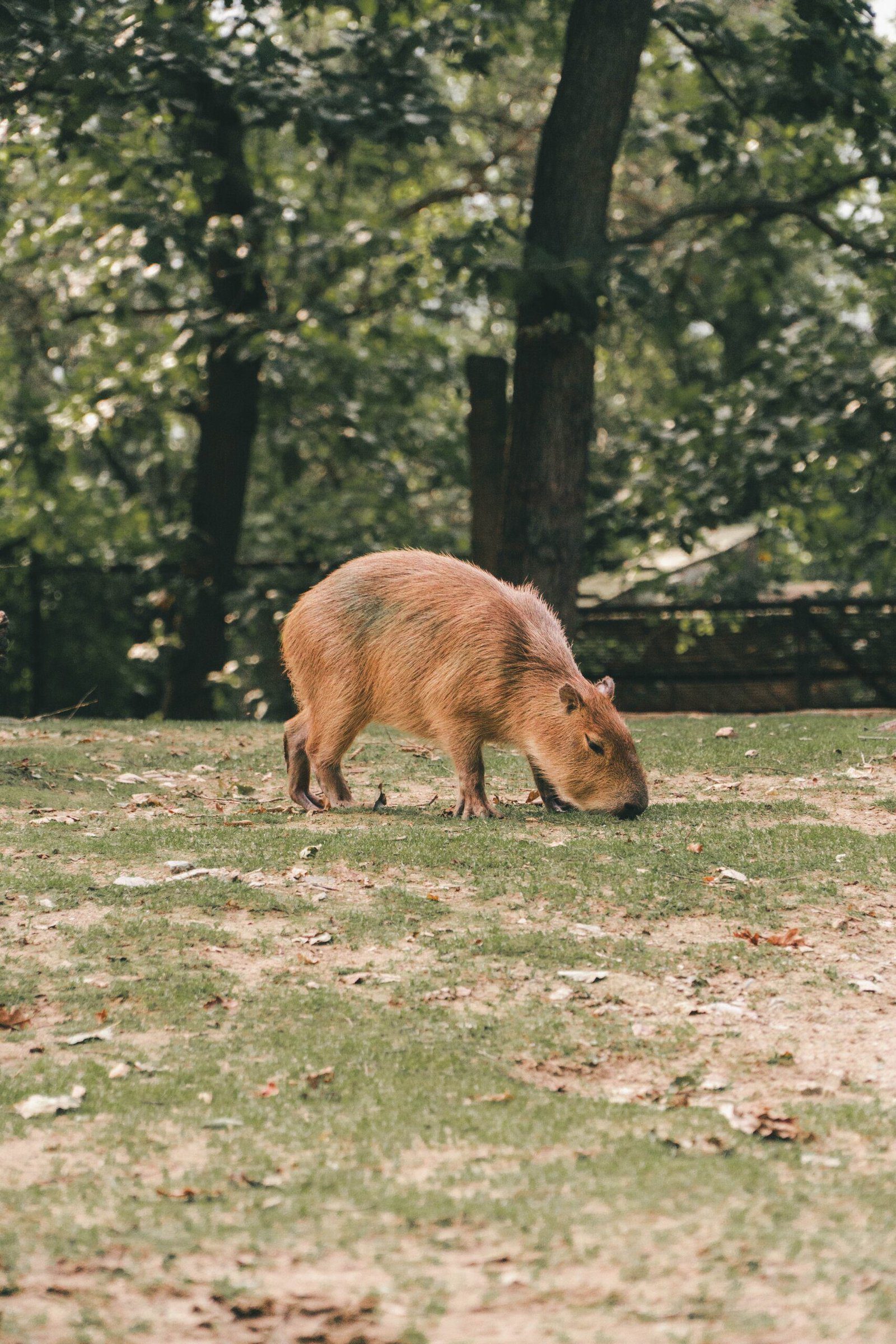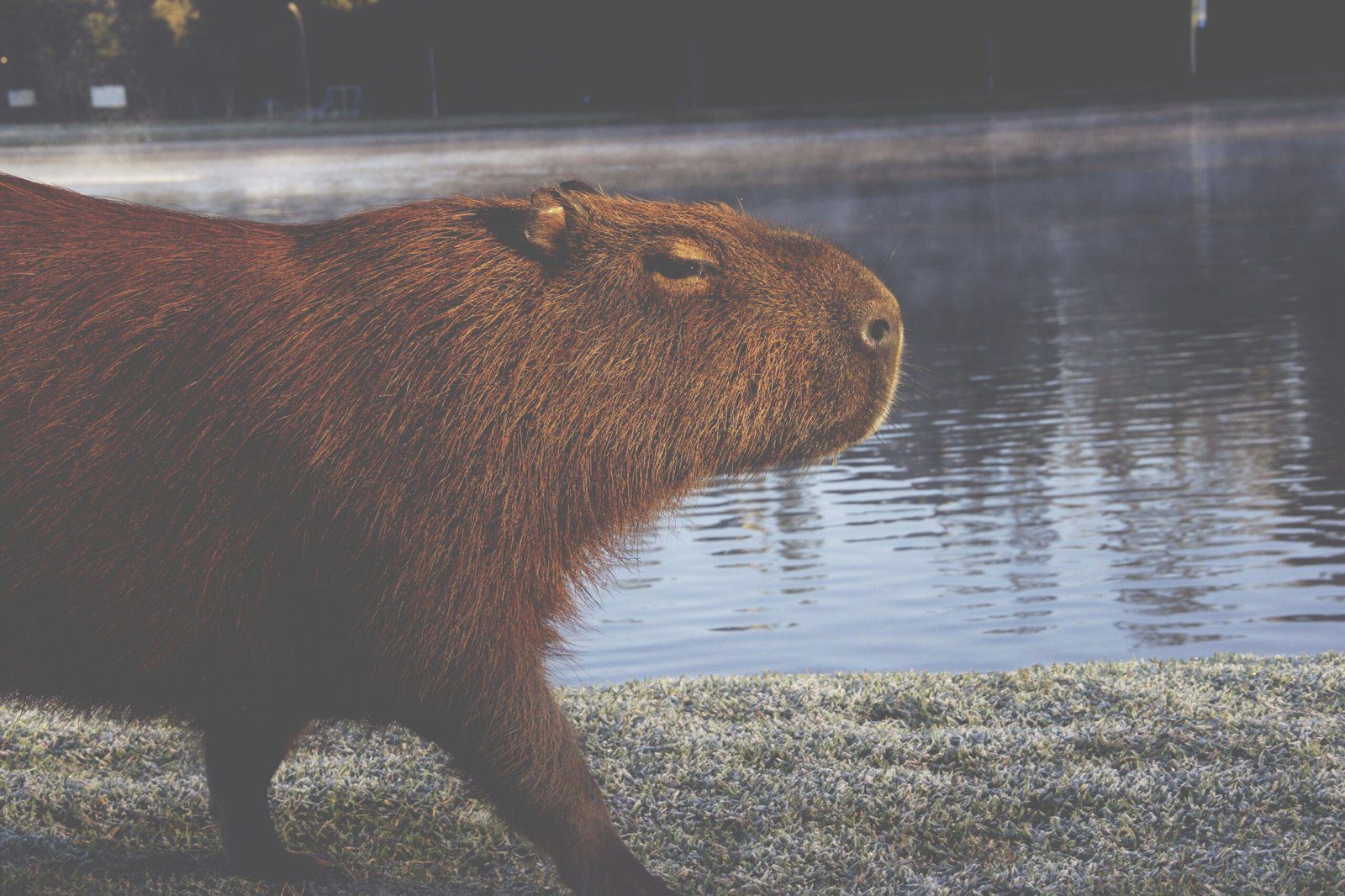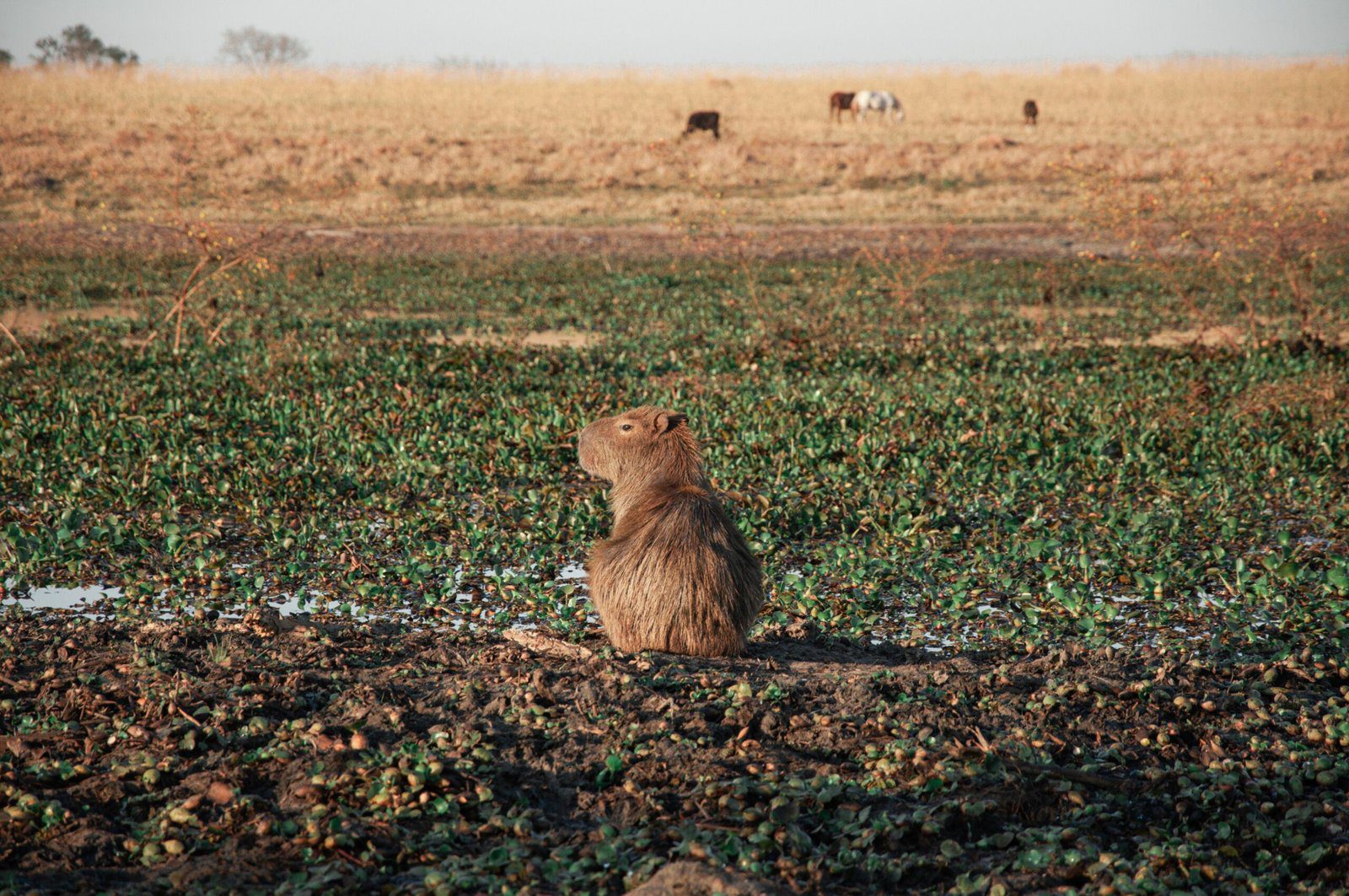Table of Contents
Did you know that capybaras, the world’s largest rodents, are not only adored as pets in some countries but also savored as a delicacy in others? This may come as a surprise, as these gentle creatures are commonly loved for their friendly and sociable nature. However, in regions like South America, capybaras have been a part of the local cuisine for centuries. The mild and tender meat is often compared to pork or rabbit, making it a sought-after dish in traditional recipes. Let’s explore the intriguing reasons behind why people eat capybaras and discover the cultural significance of this curious culinary choice.

Overview of Capybaras
Introduction to Capybaras
Welcome to the comprehensive article on capybaras! In this article, we will explore the various aspects of capybaras, from their physical characteristics and habitats to their cultural significance and controversial consumption. Let’s delve into the world of these fascinating creatures and understand their importance in both the natural and human domains.
Physical Characteristics of Capybaras
Capybaras, the largest rodents in the world, exhibit unique physical characteristics that make them truly remarkable. They possess a sturdy body structure with short, stocky legs and a barrel-shaped torso. Typically, they measure around 1.2 to 1.5 meters in length and weigh between 35 to 66 kilograms. Their dense, coarse fur ranges in colors from brown to reddish-brown, helping them blend effortlessly into their natural surroundings. Their distinctively cute faces are adorned with bright, round eyes, small ears, and a blunt muzzle. As semi-aquatic animals, capybaras have webbed feet, perfectly adapted for swift and graceful movement both on land and in water.
Habitat and Distribution
Capybaras are primarily found in the wetlands and densely vegetated regions of South America. They inhabit countries like Brazil, Colombia, Venezuela, Paraguay, and Argentina, to name a few. These sociable creatures are predominantly active during the twilight hours, taking advantage of their crepuscular nature to forage for food and ensure their survival. Natural habitats such as riversides, marshes, swamps, and ponds provide them with the ideal environment to thrive and fulfill their ecological role. However, the encroachment of human activities and habitat loss have had significant impacts on capybara populations, prompting the need for conservation efforts.
Conservation Status
As human activities continue to encroach upon capybara habitats, their populations face a growing threat. While capybaras are not currently listed as endangered, their status varies across different regions of South America. The International Union for Conservation of Nature (IUCN) classifies capybaras as “Least Concern” globally, reflecting their overall population stability. However, localized hunting and habitat degradation pose significant challenges to their conservation in certain areas. To ensure the long-term survival of these remarkable creatures, it becomes imperative to strike a balance between coexistence and conservation efforts.
Cultural Significance of Capybaras
Capybaras in Indigenous Cultures
For many indigenous cultures of South America, capybaras hold a special place. They are often revered and regarded as symbols of abundance, fertility, and even supernatural powers. In some communities, capybara parts, such as their teeth or bones, are used in traditional rituals or as talismans believed to bring good fortune. These cultural beliefs and practices highlight the deep-rooted connection between capybaras and the indigenous people, reflecting their spiritual and cultural values.
Capybaras in Popular Culture
Capybaras have also captured the attention of popular culture worldwide, earning a special place in the hearts of people. Their friendly and sociable nature, combined with their adorable appearance, makes them a popular subject among artists, photographers, and social media enthusiasts. They have become internet sensations, with countless videos and photographs spreading joy and laughter across various online platforms. The lovable capybara also finds representation in children’s books, cartoons, and even as stuffed toys, transcending cultural boundaries and spreading delight among people of all ages.

Capybara Meat as a Food Source
Historical Perspective
For centuries, capybara meat has been consumed by various communities throughout South America. Historical evidence suggests that indigenous populations incorporated capybara meat into their diets as early as pre-Columbian times. The abundant availability of capybaras in their natural habitats, coupled with their nutritional value, made them a valuable food source for indigenous peoples.
Cultural and Regional Consumption
Today, capybara meat continues to be consumed in certain regions of South America, particularly in countries such as Venezuela, Colombia, and Brazil. In these areas, it is considered a traditional delicacy and is often enjoyed during festive occasions or family gatherings. The cultural significance of capybara meat as a culinary choice deepens the bond between communities and their rich cultural heritage.
Nutritional Value of Capybara Meat
Capybara meat is known for its nutritional value and benefits. Rich in protein and low in fat, it offers a healthy alternative for individuals seeking a balanced diet. The meat is also a valuable source of essential vitamins and minerals, including iron, niacin, and vitamin B12. These nutritional characteristics, combined with its unique taste and cultural significance, contribute to the appeal of capybara meat as a culinary option.
Capybara Hunting and Farming
Traditional Capybara Hunting Practices
Traditionally, capybara hunting was practiced by indigenous communities as a means of sustenance. These communities had sustainable practices in place, ensuring that hunting was carried out in a controlled manner without endangering the overall capybara population. However, with increasing interest in capybara meat and overhunting for commercial purposes, the traditional practices have faced significant challenges, necessitating the need for sustainable alternatives.
Capybara Farming and Ranching
In response to the need for sustainable capybara consumption, capybara farming and ranching have emerged as alternatives to wild hunting. These practices involve raising capybaras in controlled environments, ensuring their well-being and minimizing the impact on wild populations. Capybara farms and ranches often prioritize animal welfare and sustainable practices, contributing to the conservation of capybaras while meeting the demand for their meat.
Sustainable Practices
To address concerns surrounding capybara consumption, sustainable practices play a crucial role. These include implementing strict regulations on hunting and commercial trade, promoting responsible farming techniques, and educating communities about the importance of conserving capybaras and their habitats. By adopting sustainable practices, individuals and industries can contribute to the long-term conservation of capybaras while still enjoying their meat in a responsible manner.

Culinary Uses of Capybara Meat
Traditional Capybara Recipes
Capybara meat is a versatile ingredient, allowing for various culinary creations in traditional South American cuisine. From hearty stews and savory empanadas to grilled or roasted dishes, capybara meat adds a distinct flavor and texture to traditional recipes. Indigenous communities have passed down these recipes through generations, preserving their culinary heritage and maintaining their cultural identity.
Cultural Cuisine Incorporating Capybara
Cultural cuisine frequently incorporates capybara meat as a beloved ingredient, showcasing the diversity and creativity of local dishes. In regions where capybara consumption is prominent, it is not uncommon to find capybara-based dishes featured prominently in local restaurants and food markets. This culinary incorporation serves as a reflection of the cultural significance of capybaras and their valuable contribution to the culinary landscape.
Culinary Delicacies
Capybara meat is also considered a culinary delicacy in certain areas. Its unique taste and succulent texture make it an exquisite choice for special occasions or gourmet dining experiences. Restaurants and chefs, passionate about regional cuisine and showcasing local ingredients, often feature capybara meat as a centerpiece of their menus, elevating it to a status of distinction and intrigue.
Cultural Factors Influencing Capybara Consumption
Cultural Beliefs and Traditions
Cultural beliefs and traditions influence capybara consumption in various ways. For many communities, consuming capybara meat is deeply rooted in their cultural practices and traditions, often associated with specific rituals or festive occasions. These cultural factors reinforce the importance of capybaras as a valuable resource, celebrated not just for their meat but also for the symbolic meaning attached to them.
Symbolism and Superstitions
Capybaras are often seen as symbolic animals, representing different concepts across cultures. Their association with abundance, fertility, and harmony has led to their inclusion in religious and spiritual practices. Some superstitions also attribute specific powers or protective qualities to capybaras, further enhancing their cultural significance. These symbolic and superstitious beliefs contribute to the consumption and reverence of capybara meat.
Economic Factors
Economic factors can also influence capybara consumption. In certain regions, capybara farming and the sale of capybara meat provide economic opportunities for communities. These economic factors can shape the demand for capybara meat and play a crucial role in its availability and consumption. Balancing economic considerations with conservation efforts is essential to ensure sustainable capybara consumption and long-term environmental preservation.
Controversies Surrounding Capybara Consumption
Animal Welfare Concerns
One of the primary controversies surrounding capybara consumption revolves around animal welfare. As capybara farming and hunting practices evolve, ensuring the well-being of these animals becomes paramount. Critics argue that insufficient animal welfare regulations and practices may lead to unnecessary suffering for capybaras. Addressing these concerns requires a focus on ethical treatment, appropriate living conditions, and the prevention of cruelty, promoting responsible consumption practices.
Threat to Wild Populations
The increased demand for capybara meat, coupled with unsustainable hunting practices, poses a threat to wild capybara populations. Overhunting can disrupt natural ecosystems and potentially lead to population decline or extinction. Striking a balance between meeting human consumption needs and protecting the wild populations is essential to preserve capybaras in their natural habitats.
Conservation and Legal Issues
Another controversy surrounding capybara consumption relates to conservation and legal issues. The trade of capybara meat, especially when conducted illegally or without proper regulations, can contribute to the exploitation of capybaras and their habitats. Illegal hunting and trafficking undermine conservation efforts and impede the enforcement of protective measures. Addressing these issues requires collaboration between governments, conservation organizations, and local communities to establish legal frameworks and enforce regulations that safeguard capybaras.
Global Awareness and Conservation Efforts
Educational Programs
Creating global awareness about capybaras and their conservation is vital in ensuring their protection. Educational programs can play an instrumental role in disseminating knowledge about the importance of capybaras in ecosystems, their cultural significance, and the conservation challenges they face. By imparting this information, individuals can develop a deeper understanding of capybaras and actively contribute to their conservation efforts.
Protected Areas and Wildlife Sanctuaries
Establishing protected areas and wildlife sanctuaries is crucial for safeguarding capybara habitats and populations. These designated areas provide a safe haven for capybaras to thrive and repopulate. Collaborative efforts between governments, conservation organizations, and local communities are essential to create and maintain these protected areas, ensuring the long-term survival of capybaras in their natural environments.
International Regulations and Advocacy
International regulations and advocacy serve as important tools in addressing the conservation challenges faced by capybaras. Organizations like the IUCN work towards the establishment of guidelines and regulations that promote sustainable capybara consumption and protect their habitats. Advocacy initiatives raise awareness, mobilize support, and foster cooperation among different stakeholders, encouraging responsible practices and conservation efforts worldwide.
Alternative Perspectives on Capybara Consumption
Consideration of Ethical Factors
Alternative perspectives on capybara consumption emphasize the significance of ethical considerations. These perspectives advocate for promoting compassionate choices that prioritize animal welfare and minimize cruelty. Encouraging individuals to question the sources of their food and opt for more sustainable and humane alternatives directly contributes to long-term wildlife conservation efforts.
Sustainable Food Options
The promotion of sustainable food options aims to reduce the impact of capybara consumption on wild populations. This perspective highlights the availability of alternative protein sources that can meet the nutritional needs of individuals without relying solely on capybara meat. By diversifying food choices and embracing sustainable practices, individuals can contribute to reducing the demand for capybara meat and supporting wildlife conservation.
Promotion of Wildlife Conservation
Ultimately, alternative perspectives on capybara consumption emphasize the importance of wildlife conservation. By raising awareness, advocating for responsible practices, and supporting conservation initiatives, individuals can actively contribute to the preservation of capybaras and their habitats. This broader focus on wildlife conservation helps foster a harmonious relationship between humans and nature, ensuring the long-term survival of these remarkable creatures.
Conclusion
Capybaras, with their unique physical characteristics, cultural significance, and controversial consumption practices, hold a complex position in the world. Appreciating their ecological role and understanding the various factors influencing their consumption is essential for striking a balance that preserves both capybaras and their habitats. By promoting sustainable practices, ethical considerations, and wildlife conservation efforts, we can ensure the long-term survival of capybaras and continue to marvel at their captivating presence in our shared world.

